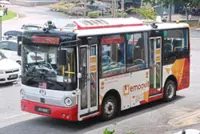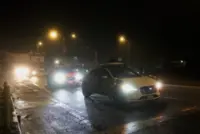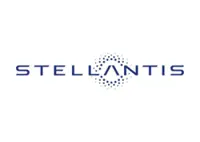‘Half of the tractor jobs are unfilled and it’s because the work is grueling and physically exhausting,’ Cafiero said of such roles at orchards in the key producing state of California, where the new equipment was first previewed in November. — AFP
Deere & Co, which has already introduced driverless ploughs to farm fields in the Midwest, now wants to bring autonomous machines to orchards, quarries and grassy lawns to help ease a tight labour market.
The world leader in agriculture equipment unveiled its new autonomous fleet at the CES trade show in Las Vegas on Jan 6. The machines, painted in Deere’s iconic green and yellow, are designed to handle some of the hardest-to-fill jobs on the work site, from the seemingly endless spraying of fruit and nut trees to hauling massive rocks in dump trucks.
The company aims to make crop farming totally autonomous by 2030, and earn about 10% of revenue from recurring sources such as subscriptions that help enable the operation of machines without a driver. The strategy comes as Deere seeks to improve profits as a downturn in the agricultural economy has made it more difficult for farmers to afford new tractors.
The challenge to ease the burden on growers is prompted by rising demand for food and materials, with an increasing world population but a shrinking number of farmers and labourers.
“Half of the tractor jobs are unfilled and it’s because the work is grueling and physically exhausting,” Igino Cafiero, Deere’s autonomy director for high-value crops, said of such roles at orchards in the key producing state of California, where the new equipment was first previewed in November.
Fruit and nut trees need to be treated up to eight times a year, with tractor operators slowly driving down the orchard rows, often at night. Deere’s new diesel orchard tractor can do the work without a driver, with an operator managing it from an app on a mobile phone.
Similarly, Deere is unveiling an autonomous 9RX tractor for the world’s biggest crop farms, an autonomous articulated dump truck for quarries, and a battery-powered autonomous mower for locations such as college or corporate campuses.
The new equipment isn’t yet commercially available, and pricing hasn’t been disclosed.
The new products include advancements in automation from initial efforts – more cameras and sensors using lasers to make three-dimensional road maps. Safety is paramount, according to Maya Sripadam, a senior product manager at Blue River Technology, which Deere acquired in 2017 to boost automation efforts.
“When this machine is navigating down the road, it will be able to see an object ahead of time and slow down,” she said of the new dump truck. “It will also be able to pull aside if it has another vehicle come by it.”
On the farm, there’s pressure from low crop prices as grain and soybeans have slumped from highs reached in 2022, after Russia’s invasion of Ukraine upended world grain markets. Deere and its competitors have pointed to a likely tough 2025, though some in the industry believe the year may see the bottom of the current cycle.
Even with the likelihood of soft sales of farm machinery this year, operators will continue moving toward autonomy to combat a lack of human workers.
The already commercialised autonomous plough has given farm families a lot of time out of the tractor, said Jahmy Hindman, Deere’s chief technology officer. They “can have, literally, weeks of their life back,” he said. – Bloomberg





